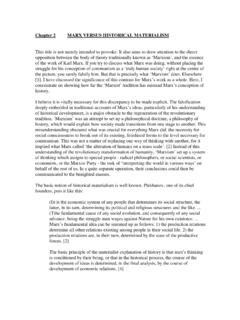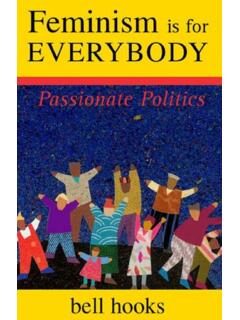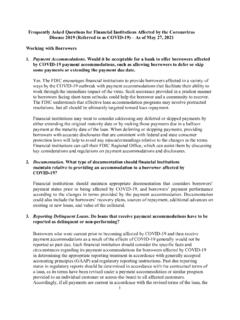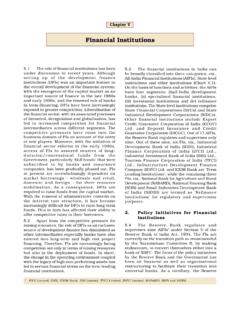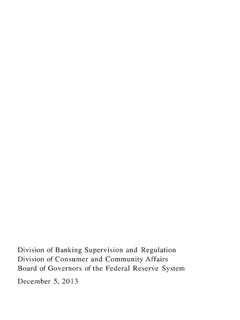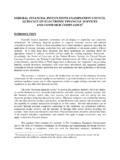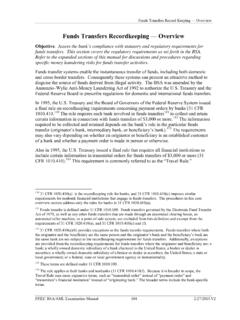Transcription of What is Gender?
1 What is Gender? Holmes(Gender) 5/29/2007 8:42 PM Page iThis SAGE ebook is copyright and is supplied by NetLibrary. Unauthorised distribution (Gender) 5/29/2007 8:42 PM Page iiThis SAGE ebook is copyright and is supplied by NetLibrary. Unauthorised distribution is Gender? Sociological ApproachesMary HolmesHolmes(Gender) 5/29/2007 8:42 PM Page iiiThis SAGE ebook is copyright and is supplied by NetLibrary. Unauthorised distribution forbidden. Mary Holmes 2007 First published 2007 Apart from any fair dealing for the purposes of research orprivate study, or criticism or review, as permitted under theCopyright, Designs and Patents Act, 1988, this publicationmay be reproduced, stored or transmitted in any form, or byany means, only with the prior permission in writing of thepublishers, or in the case of reprographic reproduction, inaccordance with the terms of licences issued by the CopyrightLicensing Agency. Enquiries concerning reproduction outsidethose terms should be sent to the Publications Ltd1 Oliver s Yard 55 City RoadLondon EC1Y 1 SPSAGE Publications Teller RoadThousand Oaks, California 91320 SAGE Publications India Pvt LtdB 1/I 1 Mohan Cooperative Industrial AreaMathura RoadNew Delhi 110 044 SAGE Publications Asia-Pacific Pte Ltd33 Pekin Street #02-01 Far East Square Singapore 048763 Library of Congress Control Number: 2006939135 British Library Cataloguing in Publication dataA catalogue record for this book is available from theBritish LibraryISBN 978-0-7619-4712-7 ISBN 978-0-7619-4713-4 (pbk)Typeset by C&M Digitals (P) Ltd.
2 , Chennai, IndiaPrinted in Great Britain by The Cromwell Press Ltd,Trowbridge,WiltshirePrinted on paper from sustainable resourcesHolmes(Gender) 5/29/2007 8:42 PM Page ivThis SAGE ebook is copyright and is supplied by NetLibrary. Unauthorised distribution Introduction to the sociology of gender12 How different are women and men?183 Is gender something that we do?404 How can gender best be explained?635 Is gender about bodies?876 What are the politics of Gender? 1107 How is gender intertwined with class?1298 How is gender intertwined with race ?1499 Conclusion: So what is Gender? 171 References183 Index203 ContentsHolmes(Gender) 5/29/2007 8:42 PM Page vThis SAGE ebook is copyright and is supplied by NetLibrary. Unauthorised distribution of this book was written within the warmth of supportiveness of thesociology department at the University of Aberdeen. I am indebted to my col-leagues there in so many ways and I continue to miss their bookwas finished at Flinders University and I apologize for ruining some of ourpleasant lunches by making everyone discuss things like symbolic capital.
3 I amvery grateful to colleagues at those and other universities who read draft chap-ters for me: Alex Howson, Karen O Reilly, Chris Beasley, Paula Black, JaneHaggis, Heather Brook, and Mike Hepworth. Thank you to CarolynCorkindale, the Department of Sociology s excellent research assistant atFlinders, for tracking down many of the references and doing much tidying upof the faults, of course, remain mine. I commend you to thosefaults as points where as readers you can engage with the text and say: Hangon a minute, I m not so sure about that . It is that engagement which will makethe book had no leave to help me complete this book, apart from a few weeks atthe end of one semester, so I hope you all feel very sorry for me. Thank youto Brent for always feeling sorry for me when I needed it. I am glad that I wasable to complete this book and writing it reminded me of all the students Ihave taught and how much I learnt from them. So thank you to them.
4 For stu-dents or colleagues who might read this, email me and tell me if you like thebook or hate it, or have is what I think it should be (Gender) 5/29/2007 8:42 PM Page viThis SAGE ebook is copyright and is supplied by NetLibrary. Unauthorised distribution got up and went to the bathroom. Leaving pyjamas on the floorand turning on the shower, Chris stepped into the water. It was not ahair-washing day, so after a quick rub with the soap it was time to getout and dry off. After towelling and applying hair putty to the new shorthaircut, Chris dabbed on some moisturising lotion and went to getdressed. Nothing special was happening today so jeans and a T-shirtwould be fine. The only choice really to be made was betweenbasketball boots or is a paragraph I made up. When you read it I imagine that youassumed either that Chris was a woman, or that Chris was a man. YetChris is a shortened name which both Christophers and Christines useand I have not used any pronouns to indicate sex.
5 There is nothing inthis description that definitively identifies masculinity or protest that real men do not use moisturiser, or that women are lesslikely to have short hair. Nevertheless, most people know of men whoare into face creams and other such products and women who haveshort decision is not defensible, but the point is that you madea decision. We do not know how to think about people as neutral; wealways think about them as women or as men and we interact with themaccordingly. If you decided Chris was a woman, go back and read theparagraph again and imagine Chris is a man. Does that change how youread it or what you think about Chris? Do you think it typical of a manjust to leave his pyjamas on the floor; do you feel a little titillated byimagining a naked man in the shower? Try to continue describingChris s day without giving away whether Chris is a man or a woman. Itis very difficult to live in a world which is organized around the idea that womenand men have different bodies, different capabilities, and different needsand desires.
6 This book examines these assumptions, drawing on sociologi-cal and related approaches to understand how and why the social world1 Introduction to the sociology of genderHolmes(Gender) 5/30/2007 11:16 AM Page 1 This SAGE ebook is copyright and is supplied by NetLibrary. Unauthorised distribution arranged around such gender distinctions. This introduction beginsthat task by defining key terms, then looking briefly at the history ofgender within sociology. In some senses the rest of this chapter outlineswhat the book is not about or, to put it more positively, why I focuson the issues that appear in the book and not on facts about inequalitiesor on media images of gender. I want to explain why I say so little aboutthese things because long experience of teaching this topic tells me thatpeople come to it with a strong sense of what is important. Many assumethat women and men are equal now and that the media are most crucialin how we now behave as women and men.
7 I want to establish some ofthe bare facts about inequalities and discuss why the media may not beas all powerful as they initially appear. I will then be able to turn to mycentral project of explaining the cultural turn within sociological andfeminist approaches to gender. When the sociology of gender emerged,inequalities between women and men were the focus. Discussion ofwomen s relative lack of access to wealth and other resources was graduallyovertaken by concerns with language and meaning. The promise andproblems of this shift within ideas about gender are the subject offollowing chapters will make more sense if the key termsused are clearly termsKey words are highlighted throughout the text in sociology of gender and related knowledge sometimes uses lan-guage that may be unfamiliar or have different meanings to those usedin everyday life. Terminology and jargon are the same thing dependingon whether you understand them or not.
8 Having specific terms withspecific meanings is useful as a shorthand way of dealing with ideas thatcan otherwise take some time to explain. Defining the most crucialterms can serve as a way to introduce the kinds of things with whichthis book is concerned. The first thing to deal with is the distinctionsociologists have made since the 1970s between sex(biological differ-ences between males and females) and gender(socially produceddifferences between being feminine and being masculine). Later thebook will return to the question of how distinct gender is from , it is generally agreed that gender differences are to be under-stood as a central feature of patriarchy, a social system in which menhave come to be dominant in relation to women. There are, as we shallsee, questions around to what extent gender is imposed on individuals asa result of the material conditions and social structures in which theylive.
9 Within sociology, material has meant various things. Karl Marx,whose thought forms a good deal of the foundations of sociology, wasChapter 12 Holmes(Gender) 5/30/2007 11:16 AM Page 2 This SAGE ebook is copyright and is supplied by NetLibrary. Unauthorised distribution concerned with how societies were organized, or structured,around meeting material needs, such as the need for food and shelter. Heargues that people s lives were determined by how a society organizedthe production of the things needed to was an emphasis onthe economic, meaning the producing, managing and distributing ofresources within society. Marx argued that industrialization instituted anew economic system called capitalismbased on employers exploitingworkers labour (only paying a wage not a share of the profits) and accu-mulating for themselves the wealth resulting from selling , material is a term that has taken on broader meanings in morerecent years, especially with regard to gender.
10 Now it is maintained thatthe materialmay include a wider range of things, not just the things weneed to survive but our bodies as things (Rahman and Witz, 2003).Yetwidening what is meant by material has been only part of the story ofdeveloping understandings of gender. For sociologists the key has beento see gender as a social construction(something created by the socialenvironment).An appreciation of how material conditions produce gen-der will be discussed but this book also looks at the importance ofdiscourses(systematized ways of talking and thinking) in how genderoperates. Medical and scientific discourses, for example, have beenimportant in constructing gender. It is important to understand the partthat ideas and meanings play in the social construction of femininity andmasculinity. There are of course sociological discourses on gender andour discussion begins with a history of these history of gender Classic sociology and other social theory contain little attention to thesocial differences between women and men.
